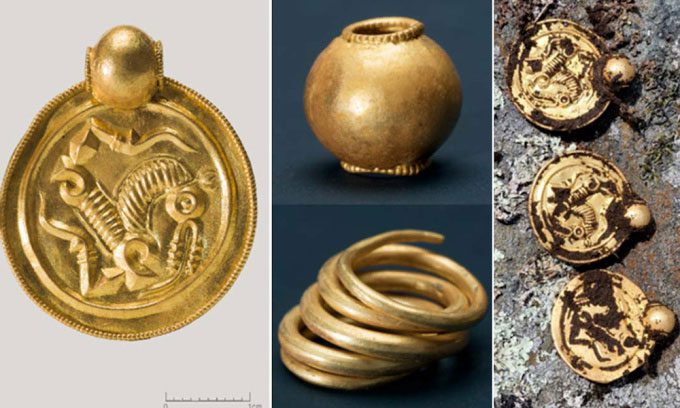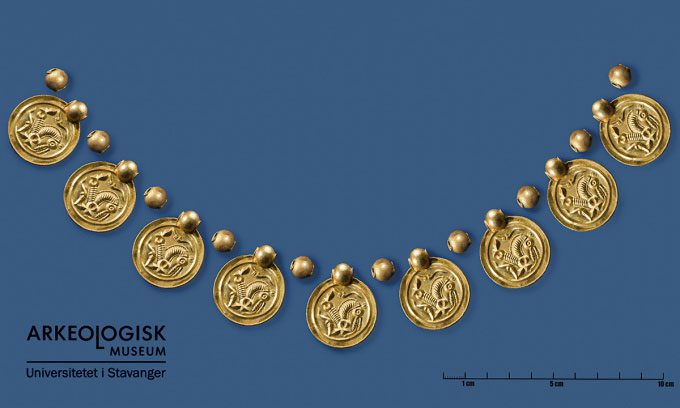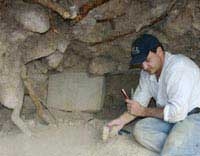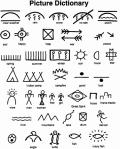A Hobbyist Metal Detectorist Uncovers Norway’s Largest Gold Treasure of the Century, Dating Back Approximately 1,500 Years.

Gold artifacts discovered by Erlend Bore using a metal detector. (Photo: Archaeological Museum/UiS).
Erlend Bore, a 51-year-old man from Norway, discovered a treasure trove of gold artifacts, including 9 rare symbol pendants, 3 gold rings, and 10 gold coins, while exploring Rennesøy, a private island off the southwestern coast of Norway, Live Science reported on September 8. Bore was using a newly purchased metal detector that beeped as he scanned the ground. After digging down, he uncovered the gold cache and quickly contacted local authorities.
Authorities reported that the gold cache weighs approximately 3.5 ounces (100 grams). They also reached out to a museum, where experts determined that the artifacts date back to around the year 500, during the Migration Period (also known as the Barbarian Invasions), when no Roman emperors ruled Western Europe. Considering the location of the Rennesøy treasure and comparing it with similar findings, Associate Professor Hakon Reiersen from the Archaeological Museum at the University of Stavanger suggested that the gold may have been hidden for safety or to be offered to the gods when necessary.
“This is a century-defining discovery of gold in Norway. Finding such a large amount of gold all at once is extremely unusual,” said Ole Madsen, director of the Archaeological Museum at the University of Stavanger.

Reconstruction of the previous appearance of the necklace featuring 9 gold pendants. (Photo: Eli Gil Bell/Archaeological Museum/UiS).
Although the pendants resemble gold coins, they are actually referred to as “bracteates,” used as decorative items. In many previous discoveries, bracteates often featured a variety of designs. However, this time, all 9 bracteates depict the same image.
They once formed an eye-catching necklace, according to Reiersen. “This jewelry was crafted by skilled goldsmiths and worn by the most powerful individuals in society. Discovering so many bracteates at once is very rare. We have not had any findings that can compare to this discovery since the 19th century,” Reiersen added.





















































